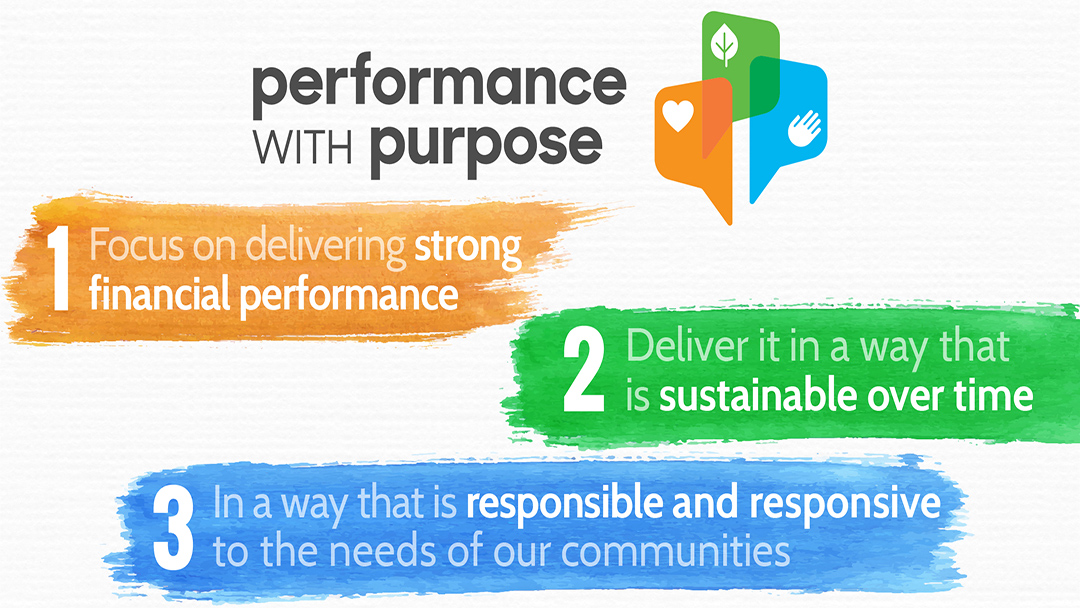At The Moment, we partner closely with our clients, which means we have connections with people across organizations, at all levels. We are privy to the conversations and messaging that drives organizations forward or holds them back. Because we are an innovation studio, we often need to talk about what it is to innovate, which leads us to conversations about risk, failure, and fear.
Fair enough. This work is wonderful, engaging, and exciting—and it isn’t easy.
Our smart, capable clients sometimes label innovation work as ‘risky’ or ‘dangerous,’ especially in slower economic climates. They have come to learn that with even the best innovation work comes the unavoidable failures, pivots, and learning that keep them (and us) up at night. As innovation partners, it’s our job to open up the other side of this conversation—that innovation is not a risky proposition but just the opposite: it’s a risk mitigation strategy.
The status quo leaves us vulnerable.
First, let’s let go of the old ideas that innovation is flashy, new, all about tech, and something that is either in or out of fashion. Innovation is the new reality—the thing we need if we’re going to remain relevant in a changing marketplace, with changing customers, in a changing world. According to recent research from Harvard Business Review, innovation is all about speed, decision-making, and understanding customer needs. In fact, Innovation-leading organizations “are far more likely to use customer insights and structured market-research for new product development” as compared to those lagging in the market.
Status quo holds risks that are predictable, and that are easier to ignore because the status quo feels better. It feels comfy, but it is absolutely not safe. Whatever you are doing now will not work at some point in the future. Drawing up the new is a huge part of a good risk mitigation strategy while you anticipate drawing down the old.
Case Study: Innovation to stay ahead of the curve.
We’re working with a consumer packaged goods company whose brand is recognizable worldwide for their signature product. They have seen the writing on the wall, and through innovation work and the seizing of opportunities that might have seemed crazy at one point, are diversifying their offering to be able to play in a new world—one where customer values have changed, and people’s demands for more environmental solutions become hugely important.
In discussions with this client, we talk about how redefining who they are and what they stand for has opened up a wonderful thing for their company and the people who work there. It’s created a more stable future by shaking up what they do with good innovation practice. This is a great example of how changing a business model or building new, relevant offerings can keep a business strong and flexible in a changing economy.
In another example, PepsiCo has been particularly successful in acknowledging a changing market and innovating through that risk. Chairman and CEO Indra Nooyi is the chief architect of Performance with Purpose, their pledge toward doing what is right and being responsive and sustainable in the world. They have read the signs in consumer trends and have realized they needed a portfolio of healthier products.
While PepsiCo talks about innovation in terms of product development, their innovation portfolio, diversification of product offerings, and even their gutsy move away from sugar-laden products is evidence of how boldly they have stepped into innovation work to support their prosperous future. While new healthy brand competitors enter the market, PepsiCo is keeping step and winning by playing in new areas with new offerings, proving that innovation can come in many forms: service, product, business model, and value propositions to name a few.

PepsiCo’s ‘Performance with Purpose‘ brings together innovation, business impact, and sustainability.
The value of a solid innovation strategy.
At The Moment, you can enter innovation work through a couple of ways of working: Develop an Innovation Strategy, and Develop a Product or Service. Which one is right for you depends on where your organization is at, and what kind of timeline you have for results and change.
In the interests of drawing our attention to risk mitigation strategies, let’s focus on developing an innovation strategy. This is the clear articulation of the why, what, how, who, and when of your innovation efforts. It is an exploration of core, adjacent, and transformational opportunities that can be leveraged for long-term success and growth.
It is also the articulation of an innovation portfolio where you can find out which opportunities are good ideas and those which will fail to perform. The “inevitable failure” of innovation is not only found in a good innovation portfolio, but mitigated by it. A good innovation strategy enables you to fail early (and cheaper) and only on a part of your effort (again…cheaper)!
A well crafted innovation strategy will allow you to:
- Fail early (when it’s helpful), and in small manageable ways
- Take smaller risks so you can find the right path
- Take less pivots by having confidence in business factors such as market demand, competitive landscape, consumer preferences, changing demographics, and more
- Keep pace, and even stay ahead of, the competition
- Mitigate attrition in your own industry
- Sense into opportunities that are core (aligned with your current business model), adjacent (close to, but slightly next to your model), and transformational (in line with your purpose, but nowhere near your current offering)
Case Study: Innovation for a fast changing industry.
One of our clients from the content and publishing sector engaged us to help shape their innovation strategy at a time when they had a year to make or break their existence. Their environment had pushed their business model to the brink, and their customer relationships into an unhelpful place. This do-or-die organizational moment created a lot of the right commitment to developing a solid innovation portfolio, and embracing the bravery needed to step out of what we do now and into imagining what we might do that works in the future.
The result of this engagement was a solid innovation strategy, an action plan for change, a new senior level innovation role within the organization, a new venture for innovation efforts and…their continued success and existence with much of their offering reinvented. That’s a lot to get from a 7 month engagement of research, capability development, strategy building, and futuring work. They showed themselves and their sector that status quo can indeed be more risky than innovation work, and that taking the risk to innovate can yield big results when done well.
Four do’s and don’ts when starting innovation strategy work.
It can be daunting to take the leap into developing an innovation strategy. Luckily, engaging with innovation as a risk mitigation strategy isn’t an ambiguous and vague undertaking. The field of innovation design has matured and there are choices for how to get started and prepare your business to be one of the ones that survives. Here are some quick tips in that regard:
- Stay away from any promises that Design Thinking will save you. Design Thinking is a start, and we certainly incorporate its core principles and practices into our own method, but on its own it won’t do what you need. Look for Innovation Design instead.
- Ensure you have someone on your team (consultant or internal) who knows what great innovation work looks like, and can get the right momentum going for you.
- Ensure that your innovation efforts put your customers at the centre of your work. Whenever possible try to build solutions with them.
- Remember that innovation isn’t done in a day. It’ is a process that, depending on your business challenge and innovation infrastructure, can take months or even years. Beware the consultant who says they can get you innovation results in a day. It can be a great day…but there’s more work to be done.Check out ourIdeas page for resources and tools to help you understand that work.
Mitigating risks today, thriving tomorrow.
If you’re navigating a tumultuous market based on the signals and trends of today, you are leaving yourself vulnerable to the risks of tomorrow.
The point of an adaptable innovation program is that you just don’t know what the future holds. Market demand, the competitive landscape, consumer preferences, changing demographics, technological advances—they all affect your business and your bottom line. Having a mindset and an approach that mitigates these risks by allowing your organization to sense into the future, place small bets, and figure out—early—how to succeed based on signals and trends is the only way to stay ahead of the curve.
The challenge for your organization may not be the burning platform felt by the organization above. If it isn’t that urgent you have a bigger, bolder, braver decision on your hands—to decide to step into risk mitigation with innovation strategy as the core of what you need to do. One might say it is even braver and smarter to engage in this work before you can smell the flames of your burning platform. Today’s successful leaders are seeing the inevitable and are embracing innovation as a risk mitigation strategy today, for the success of the business tomorrow.
Navigate disruption like a pro.
We just released a new tool called The Disruption Canvas. It’s a practical guide designed to help you identify, understand, and seize opportunities in times of disruption and create an adaptable plan to move past them. Wherever you are on your journey, this canvas will help you to sense, respond, and act.
You can get the guide by filling in some information below, or read more about The Disruption Canvas here. Lead your team to navigate disruption today, and build resilience to excel tomorrow.

